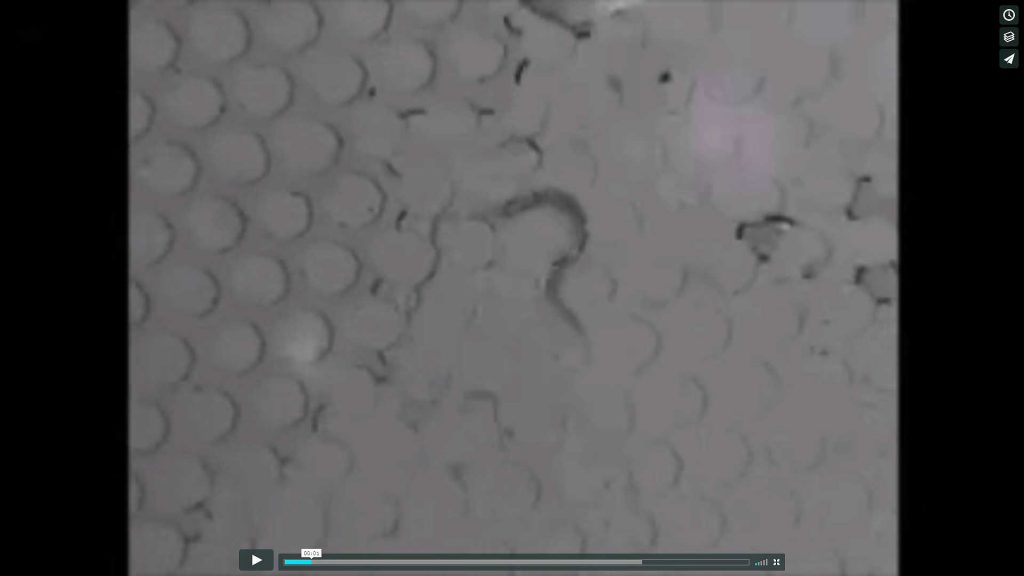Recent improvements in our knowledge of the natural environment of C. elegans1 should make us cautious about the conclusions we draw from observations of worm behavior on agar plates. Do microfluidic devices offer a more naturalistic alternative?
We now know that C. elegans is most often found in rotting (bacteria-rich) fruits and stems. Field samples yielding C. elegans are sopping wet – squeeze them like a sponge and they release copious amounts of water (M. Felix, personal communication). Extrapolating from these basic findings, with a dash of poetic license, one imagines that C. elegans normally finds itself in a three-dimensional, fibrous matrix that is cool, fluid-filled, and comparatively dark. Oxygen levels are low because bacteria densities are high. The worm is swaddled by randomly distributed plant fibers that contact the body at discrete points on all quadrants of the body. These contact points provide the reaction forces for undulatory locomotion2.
If the above description is reasonably accurate, then food-free agar plates may be a very unnatural environment: glaringly bright and hyperoxic (unless special precautions are taken), two-dimensional instead of three-dimensional. In addition, contact with the agar is localized to the lateral midline and occurs as one continuous band rather than as discrete points. Thus, the sinuous waveform of worms on agar plates, with its single wavelength and amplitude, may be more modeler’s dream than the natural state of the worm’s motor system.
Certain microfluidic devices can do a bit better than agar plates. Here I’m thinking of pillar-filled chambers known as “artificial dirt”3. Admittedly, light, oxygen levels, and two-dimensionality remain problematic, as the devices are made of a transparent, gas permeable polymer and are planar. But the worm is fully immersed in the fluid, and the chip’s pillars, floor, and ceiling approximate the swaddling effect of fibrous plant material. Along the worm’s dorsal and ventral surfaces, contact points are discrete rather than continuous, providing a more realistic set of reaction forces for locomotion.
Here’s a simple experiment along these lines that is both fun and illuminating. Inject larval worms into an artificial dirt chip designed for adult worms. As shown in the accompanying movie above, a form of locomotion develops that is neither swimming nor crawling. Worms seem to leap from one pillar to the next, propelled by vigorous body bends. Remarkably, they travel at about ten times the speed of crawling worms, making the conclusion that worms evolved to move like this, irresistible.
1. https://www.ncbi.nlm.nih.gov/pubmed/28476862
2. http://jcs.biologists.org/content/s3-94/28/551.short
3. https://www.ncbi.nlm.nih.gov/pubmed/18337372

